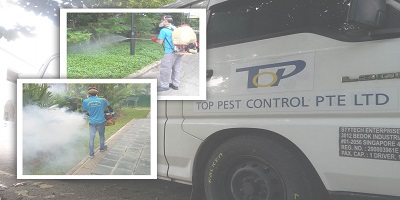Comprehensive Guide to Termite Control in Singapore: Safeguarding Your Home and Property
Understanding Termites in Singapore
Singapore is home to several species of termites, but the most common types are subterranean termites and drywood termites. Subterranean termites build their nests in soil and can cause extensive damage to structures by creating mud tubes to access wood sources. Drywood termites, on the other hand, infest dry wood and are often found in furniture and structural timbers.
Signs of Termite Infestation
Detecting termite activity early is crucial to prevent severe damage. Common signs of infestation include:
Mud Tubes: Subterranean termites create pencil-sized mud tubes on walls, foundations, or other structures to protect themselves while traveling between their nest and food source.
Wood Damage: Termites consume wood from the inside out, termite control Singapore leaving a thin veneer of wood or paint intact. Tap on wooden structures and listen for a hollow sound, which may indicate termite activity.
Swarmers: Winged termites, or swarmers, emerge to mate and start new colonies. Finding discarded wings near windows or doors is a common sign of infestation.
Frass: Drywood termites produce frass, which are tiny, wood-colored pellets, often found near infested wood.
Risks Posed by Termites
Termites can cause extensive and costly damage to homes and buildings. Structural integrity can be compromised as termites weaken wooden supports, floors, and walls. This damage not only affects the value of the property but can also pose safety risks. Additionally, repairing termite damage can be expensive, making proactive termite control measures a wise investment.
Effective Termite Control Measures
Inspection and Monitoring: Regular inspections by professional pest control services are essential. Experts use tools like moisture meters, infrared cameras, and borescopes to detect hidden termite activity. Monitoring stations can also be installed around the property to track termite presence.
Soil Treatment: Soil treatment involves applying termiticides to the soil around the foundation of a building. This creates a chemical barrier that prevents termites from entering the structure. Common termiticides used in Singapore include imidacloprid and fipronil.
Baiting Systems: Termite baiting systems are an effective and environmentally friendly method of control. Bait stations are placed around the property and filled with a cellulose material treated with a slow-acting insecticide. Termites consume the bait and share it with the colony, eventually leading to the colony's elimination.
Wood Treatment: Applying termiticides directly to wooden structures can help protect against termite infestations. Borate treatments are commonly used, as they penetrate the wood and remain effective for many years.
Physical Barriers: Physical barriers, such as stainless steel mesh or sand barriers, can be installed during construction to prevent termites from accessing the structure. pest control company singapore These barriers are effective long-term solutions for termite prevention.
Moisture Management: Since termites thrive in moist environments, managing moisture levels around the property is crucial. Fixing leaks, ensuring proper drainage, and using dehumidifiers in susceptible areas can help reduce the risk of infestation.
Choosing a Professional Pest Control Service
Selecting a reputable pest control service is essential for effective termite management. Look for companies that are licensed, have positive reviews, and offer warranties for their services. A professional service will provide a comprehensive termite management plan tailored to your property’s specific needs.


Comments
Post a Comment